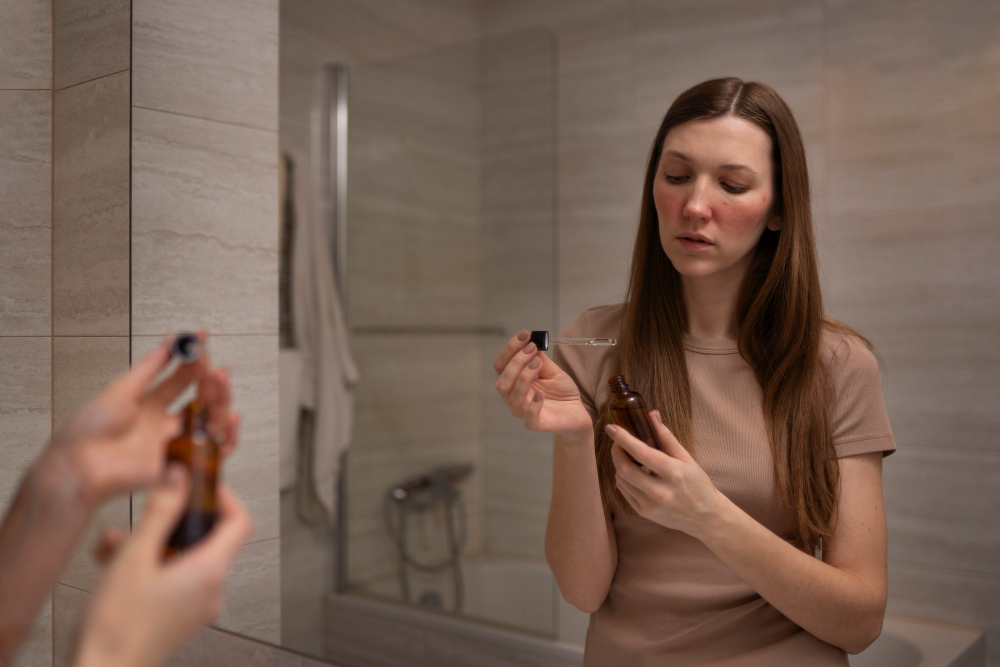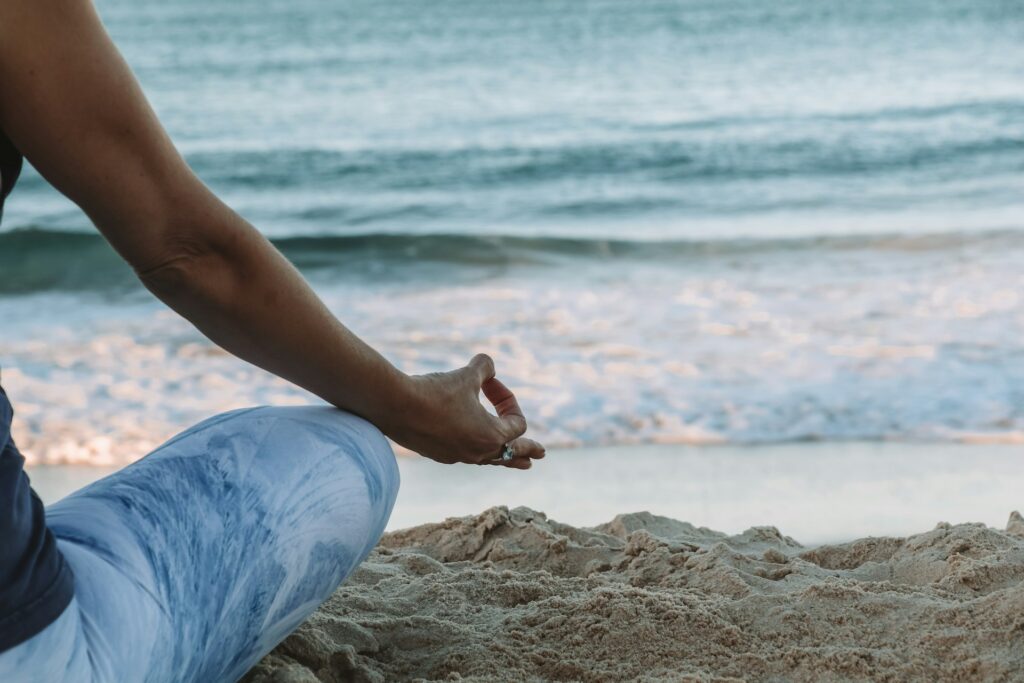Let’s be honest – who has time for a 12-step skincare routine when you’re juggling work, life, and trying to maintain some semblance of sanity?
Welcome to the club, sister. You’re not lazy – you’re strategic. And here’s the plot twist that’s going to change everything: sometimes less really is more when it comes to skincare, and a minimal routine can actually lead to better results than those overwhelming 20-step regimens that make you feel like you need a chemistry degree to get ready for bed.
The Reality Check We All Need
Let’s talk about the elephant in the room – time. Between deadlines, social commitments, family obligations, and trying to squeeze in some semblance of self-care, most of us are operating on borrowed time. The beauty industry wants us to believe that achieving healthy, youthful-looking skin requires a small pharmacy’s worth of products and the dedication of a skincare influencer. But here’s what they’re not telling you: complexity often leads to inconsistency, and inconsistency is the real enemy of good skin.
Think about it. How many times have you started an elaborate skincare routine with the best intentions, only to abandon it three weeks later because it felt like a part-time job? Or maybe you’ve stood in your bathroom at midnight, staring at seven different bottles, wondering if the retinol goes before or after the vitamin C, and just said “forget it” and went to bed with makeup wipes as your only companion.
You’re not alone, and you’re definitely not failing at self-care. You’re just human, living in a world that moves at warp speed, trying to figure out how to look and feel your best without sacrificing your sanity or sleep schedule.
The Science Behind Simplicity
Here’s where things get interesting – and where science becomes your best friend. A minimalist skincare routine might actually be better for your skin, according to beauty experts who’ve spent years studying what really works versus what just looks impressive on Instagram.
Your skin is remarkably intelligent. It has its own natural processes for renewal, protection, and repair. When we overwhelm it with too many active ingredients, we can actually disrupt these natural functions, leading to irritation, sensitivity, and that frustrating cycle of trying to fix problems that we might have inadvertently created.
The key is focusing on ingredients that work synergistically – think of them as the power trio of your beauty routine. Instead of throwing everything at the wall to see what sticks, we’re going to be strategic about choosing ingredients that complement each other and deliver maximum impact with minimum fuss.
The Holy Trinity: Your Anti-Aging Power Players
Let’s cut through the noise and focus on what actually matters. The essentials that actually work boil down to just four key players: Vitamin C, Hyaluronic Acid, Moisturizer, and SPF – though I’d argue we can streamline this even further.
Morning Routine: Protection Mode Activated
Step 1: Gentle Cleanser (30 seconds) Start your day by washing away the night. Nothing fancy needed – a gentle, non-stripping cleanser that doesn’t leave your skin feeling tight or squeaky. Think of this as clearing the canvas for everything else to work effectively.
Step 2: Vitamin C Serum (1 minute) This is where the magic happens. Vitamin C helps improve the look of dark spots by inhibiting melanin formation and acts as a powerful antioxidant shield against environmental stressors like pollution and free radicals that contribute to visible signs of aging. A few drops patted into clean skin, and you’re building your defense system for the day ahead.
Step 3: Moisturizer (30 seconds) Hydration is non-negotiable. Your moisturizer should feel comfortable, absorb well, and play nicely with your sunscreen. This step is about maintaining your skin’s barrier function – think of it as your skin’s personal bodyguard.
Step 4: Sunscreen SPF 30+ (1 minute) The best way to keep your skin safeguarded is to apply sunscreen with an SPF of at least 30 every morning. This isn’t just about preventing sunburn – it’s about preventing the majority of visible aging signs before they start. UV damage is cumulative, which means every day you skip sunscreen is a day your future self might regret.
Total morning time investment: Under 4 minutes. That’s less time than it takes to brew your coffee.
Evening Routine: Repair and Renew
Step 1: Double Cleanse (2 minutes) Evening is when you need to remove the day – makeup, sunscreen, pollution, the stress of that Zoom meeting that should have been an email. Start with an oil-based cleanser or micellar water to dissolve makeup and sunscreen, then follow with your gentle morning cleanser.
Step 2: Retinol (30 seconds) Here’s your anti-aging heavy hitter. Retinol is a form of vitamin A used in skin products to minimize the signs of aging skin. It works while you sleep to encourage cell turnover, which means you’re literally waking up with newer, fresher skin. Start slowly – maybe twice a week – and build up tolerance. Your skin will thank you for the patience.
Step 3: Moisturizer (30 seconds) Evening moisturizers can be richer than their morning counterparts since you don’t need to worry about makeup application or sunscreen interaction. This is your skin’s recovery period, so give it the hydration it needs to do its repair work overnight.
Total evening time investment: Under 4 minutes. You’ll spend more time choosing a Netflix show.
The Art of Strategic Shortcuts
Now, let’s talk about those days when even a 4-minute routine feels like climbing Everest. Life happens – you’re traveling, you’re exhausted, you’re dealing with a crisis, or you just can’t even. Here’s your emergency protocol that still keeps you in the game:
Morning Survival Mode: Splash of water, moisturizer with SPF. Done. Two minutes, maximum impact.
Evening Survival Mode: Cleansing wipes (yes, I said it), moisturizer. Sometimes survival mode is the best mode, and maintaining some routine is better than abandoning ship entirely.
The goal isn’t perfection – it’s consistency over time. Your skin responds better to a simple routine you actually do than a complex one you abandon every few weeks.
Common Mistakes That Keep Us Stuck
Let’s address the mistakes that derail even the most well-intentioned routines:
Over-Complicating the Timeline In the morning, apply your vitamin C serum to clean, dry skin and follow with moisturizer and sunscreen. In the evening, apply your retinol to clean skin. That’s it. No complicated timing charts or waiting periods between products.
Expecting Overnight Miracles Anti-aging is a marathon, not a sprint. Consistency over months and years is what creates real change. Set realistic expectations and celebrate small improvements rather than expecting dramatic transformations in a few weeks.
Product Hopping Every few months, there’s a new “miracle” ingredient that promises to change your life. Resist the urge to constantly switch products. Give your routine at least 3 months to show results before making changes.
Ignoring Your Skin’s Feedback Your skin will tell you what it needs. Irritation, excessive dryness, or breakouts are signals to slow down or adjust your routine. Listen to these cues rather than pushing through because an Instagram influencer told you to.
The Economics of Smart Skincare
Let’s talk money for a minute. A simplified routine isn’t just easier on your schedule – it’s easier on your wallet. Instead of buying multiple products that might not play well together, you’re investing in fewer, higher-quality products that you’ll actually use consistently.
Think about cost per use rather than upfront cost. A $50 vitamin C serum that you use daily for six months costs you about 28 cents per day. That’s less than your morning coffee, and it’s working 24/7 to protect and improve your skin.
Focus on ingredients that multitask. A good moisturizer with hyaluronic acid eliminates the need for a separate hydrating serum. A tinted moisturizer with SPF combines your moisturizer, sunscreen, and light coverage in one step.
Lifestyle Integration: Making It Stick
The best routine is one that fits seamlessly into your life. Here are some strategies that actually work:
Habit Stacking Attach your skincare routine to something you already do consistently. Brush teeth → skincare routine. This creates a natural flow that’s easier to maintain.
Strategic Product Placement Keep your products visible and accessible. If you have to dig through a drawer to find your vitamin C serum, you’re less likely to use it consistently.
Travel-Friendly Options Choose products that travel well or have travel-sized versions. Your routine shouldn’t fall apart because you’re away from home for a few days.
Seasonal Adjustments Your skin’s needs change with seasons, hormones, and life circumstances. Be flexible and adjust accordingly, but maintain your core routine foundation.
The Long Game: What to Expect
Here’s the reality check: anti-aging skincare is about preventing future damage and maintaining what you have, not turning back the clock dramatically. But here’s what you can realistically expect from a consistent, simple routine:
Weeks 1-2: Skin feels more comfortable, hydrated, and balanced. Makeup applies more smoothly.
Weeks 4-6: Skin texture begins to improve. You might notice a subtle glow that comes from healthy, well-hydrated skin.
Months 3-6: This is where the real magic happens. Consistent sunscreen use prevents new damage, vitamin C brightens and evens skin tone, and retinol begins to show its effects on skin texture and fine lines.
Year 1 and Beyond: You’re playing the long game now. Your skin is protected, maintained, and gradually improving. More importantly, you’ve established sustainable habits that will serve you for decades.
Beyond Products: The Holistic Approach
While products are important, they’re just one piece of the puzzle. Your skin reflects your overall health and lifestyle, so consider these factors that work synergistically with your skincare routine:
Sleep Quality This is when your skin does its repair work. Prioritizing 7-8 hours of quality sleep is one of the most effective anti-aging strategies available – and it’s free.
Hydration Well-hydrated skin from the inside out looks plumper, more radiant, and more resilient. Keep that water bottle handy.
Stress Management Chronic stress shows up on your skin in various ways. Finding healthy ways to manage stress – whether that’s exercise, meditation, or just saying no to obligations that drain you – will reflect in your complexion.
Nutrition You don’t need a perfect diet, but consistently eating foods rich in antioxidants, healthy fats, and vitamins supports your skin’s natural functions and repair processes.
The Permission to Be Human
Here’s something no one talks about enough: it’s okay to have days when you don’t feel like taking care of yourself. It’s okay to go to bed with makeup on sometimes. It’s okay to use face wipes when you’re exhausted. It’s okay to be human.
The goal isn’t to achieve skincare perfection – it’s to develop sustainable habits that support your skin health over time without adding stress to your life. Some days, you’ll nail your routine. Other days, you’ll do the bare minimum. Both are fine as long as you keep showing up.
Self-care isn’t selfish, but it also shouldn’t feel like another item on your overwhelming to-do list. Your skincare routine should be a moment of care for yourself, not another source of guilt or pressure.
Your Next Steps
Ready to embrace the lazy girl approach to anti-aging? Here’s how to start:
- Audit your current routine. What are you actually using consistently? What’s sitting unused on your shelf?
- Start simple. Pick one morning routine and one evening routine. Master these before adding anything else.
- Give it time. Commit to your simplified routine for at least 3 months before making changes.
- Listen to your skin. Adjust based on how your skin responds, not on what you think you should be doing.
- Be patient with yourself. Building new habits takes time. Focus on progress, not perfection.
Remember, the best skincare routine is the one you’ll actually do consistently. You don’t need to spend hours in front of the mirror or invest in dozens of products to have healthy, well-maintained skin as you age. You just need to be strategic, consistent, and kind to yourself in the process.
Your future self is counting on the choices you make today – but those choices don’t have to be complicated to be effective. Sometimes, the most powerful thing you can do is keep it simple, stay consistent, and trust the process.
After all, you’re not lazy – you’re just smart enough to know that the best approach is often the most sustainable one.

Disclaimer: This article is for informational purposes only and is not intended as professional medical advice, diagnosis, or guidance. Individual skin types and conditions vary, and what works for one person may not work for another. Before starting any new skincare routine, especially if you have sensitive skin or existing skin conditions, consider consulting with a dermatologist or skincare professional. The author and publisher are not responsible for any adverse reactions or consequences resulting from the use of any suggestions, products, or procedures mentioned in this article. Always patch test new products and discontinue use if irritation occurs.
Sources:
- South China Morning Post Style Magazine
- Byrdie Beauty Editorial
- Business Insider Lifestyle Section
- Fuchsia Magazine Beauty Content
- Cleveland Clinic Health Information
- Cosmopolitan Beauty Section
- Various dermatology and skincare industry publications



